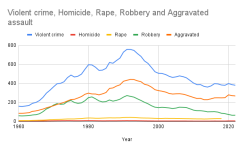GuiltyCowboy
Virgin
- Joined
- Mar 6, 2025
- Posts
- 295
Yes, completely irrational: all the bears I've met have just been perfectly nice men who aren't that interested in women.Man v. Bear is interesting, sort of, but it's REALLY an illustration of how a cultural milieu can make people choose irrationally.

